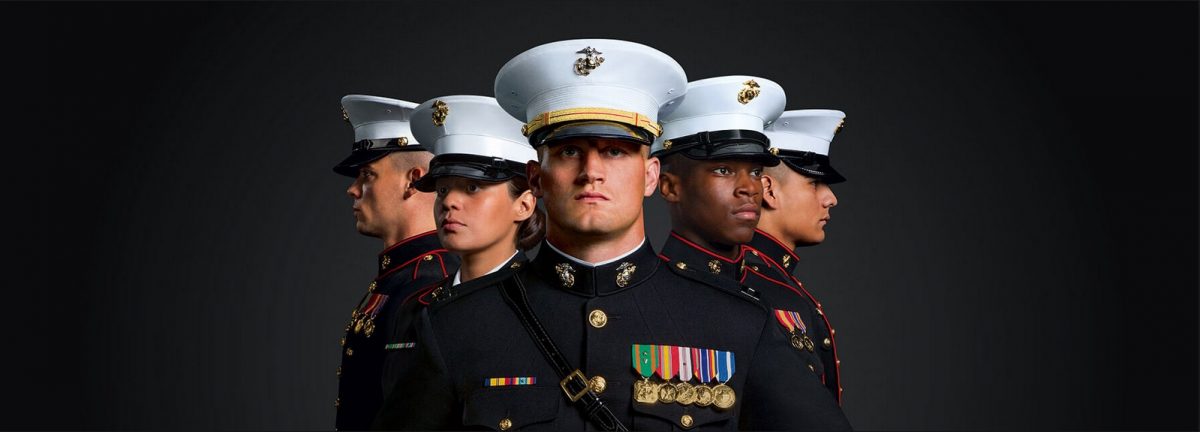
A photograph in this morning’s Independent depicts the powerless Prime Minister, Tony Blair, standing beside President and Mrs Bush. The delighted ensemble is flanked by two Marines, each wearing dark, medal-bedecked tunics and light trousers. Both Marines, of course, also wear the peaked cap of the Marine. The visors of military caps invariably jut downwards at an impractical angle, thereby enforcing what is imagined to be an appropriate hyper-bolt-upright stance in the wearer. I have no doubt that a proponent of the Alexander Technique would assert that such a posture compresses the vertebrae of the neck and upper back producing an inflexibility inconsistent with the requirement for fluidity of the trained military body. I am not losing sleep over this.
Even when the cap visor precludes a normal forward-looking gaze it is possible to tip the cap back slightly thereby clearing the eyes for the surveillance one would surmise is necessary for the survival of the expensively trained military specialist. In the Independent photo, the two Marines have opted for slightly different cap-wearing styles. On the right of picture the Marine’s visor is drawn low over the eyes, completely shading them from view. It is not possible to see the expression in these eyes. On the left of picture the visor has been pushed back to reveal the eyes. This Marine is simulating expressionlessness. There is no such thing, even in death. While much of the face is held stiffly in what passes for neutral, the eyes are tense and uneasy. The expression could, it is true, be taken for one of alert readiness, but basically the Marine looks uncomfortable. His colleague, however, despite and because of our not being able to see his eyes, looks more relaxed.
The odd thing is that Marines are meant to look at you and scare you, not the other way round. The visor will enable this intimidating gaze to be conducted from the shadows so that if the Marine is not confident of manufacturing an unambiguous glare, the rest of his stern face will convince you that the unseen eyes are scaring. Not all Marines will need to hide beneath the visor but it does impart some of the benefits of dark glasses to those in need. The visor is such an extreme device that it actually compels rumination on the credibilty of the military bearing and all that it supposed to represent. Could it be that the visor not only enforces a chin-jutting, down-staring effect, as designed and intended, but also protects the corpsman from a sceptical gaze – our gaze – that might detect the proximity of his fear and anxiety to his undoubted strength and aggression?
On the other hand, from the point of view of the corpsman’s superior officer, the visor ensures not only a respectful head/neck angle but a vulnerable one – the face is too open, as is the throat, and the inspecting officer sees its angle as one of supplication. He is, furthermore, protected from the Marine’s strength and fear by the regulation that compels the Marine to avoid eye contact with the officer whilst under inspection. What the civilian sees as menacing aloofness, the officer sees as an embodiment of obedience.
These are elements of well established ritual but embedded in them is an unwitting acknowledgement of the fact that even at the point on the spectrum where warrior qualities should be at their purest there exists a theatre of manliness rather than the real thing. In the greater part of the spectrum, between the poles of larval feebleness and titanic rigidity, it is taken for granted that the manly thing is something you learn, it doesn’t come naturally. Soldiers get a bonus in the course of this apprenticeship – they are taught to be angry on request, as if the object of the anger were not relevant to the feeling. This is the sort of thing actors do, in a way, so it’s not surprising that even when the bayonet is inches from your nose, it’s a bit like show business, devoid of the entertainment value.
The visor is too ambiguous, it’s a comedy prop, a nasty equivalent to the tickling stick. It gives the game away.
18.05.2007


